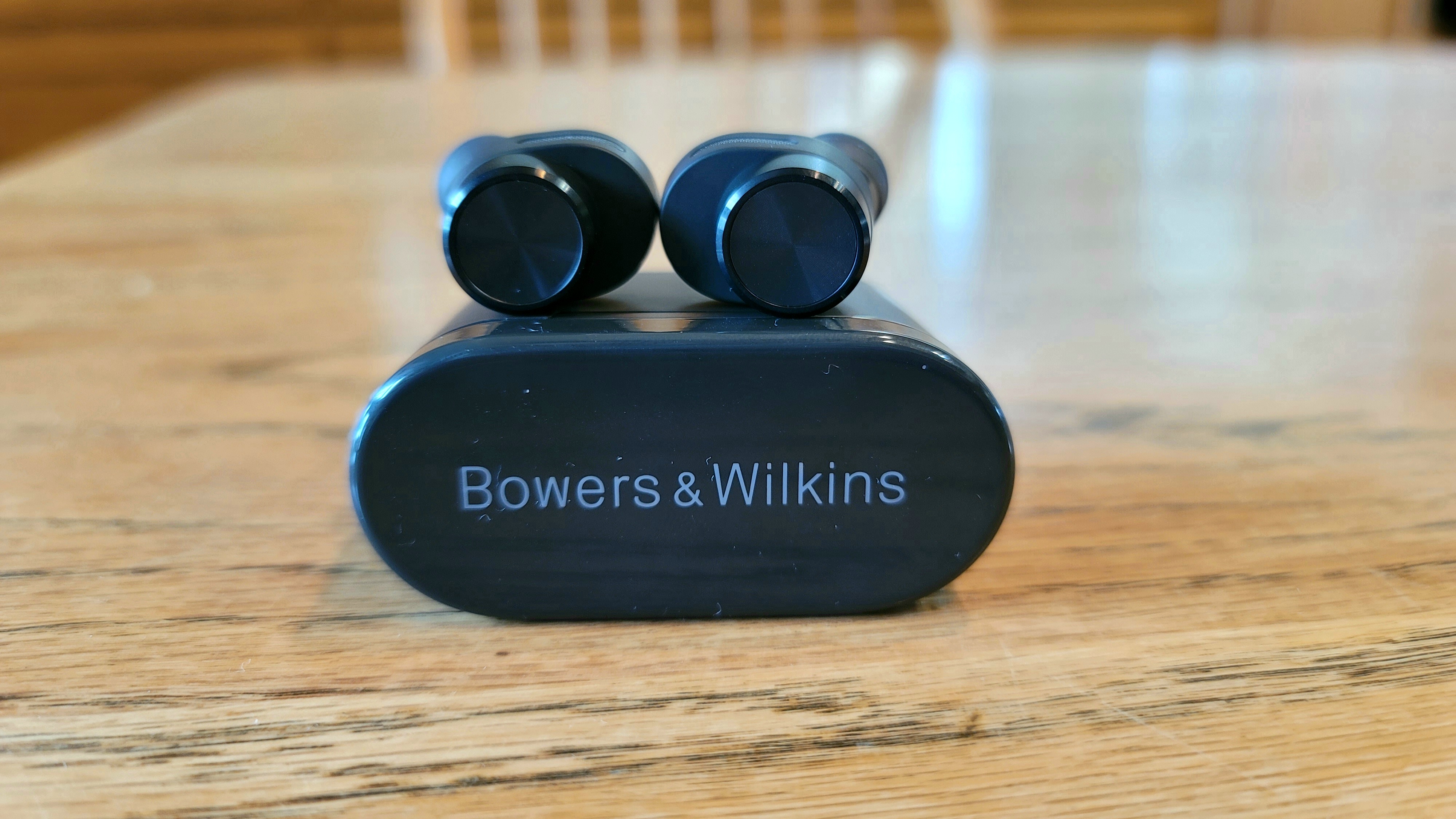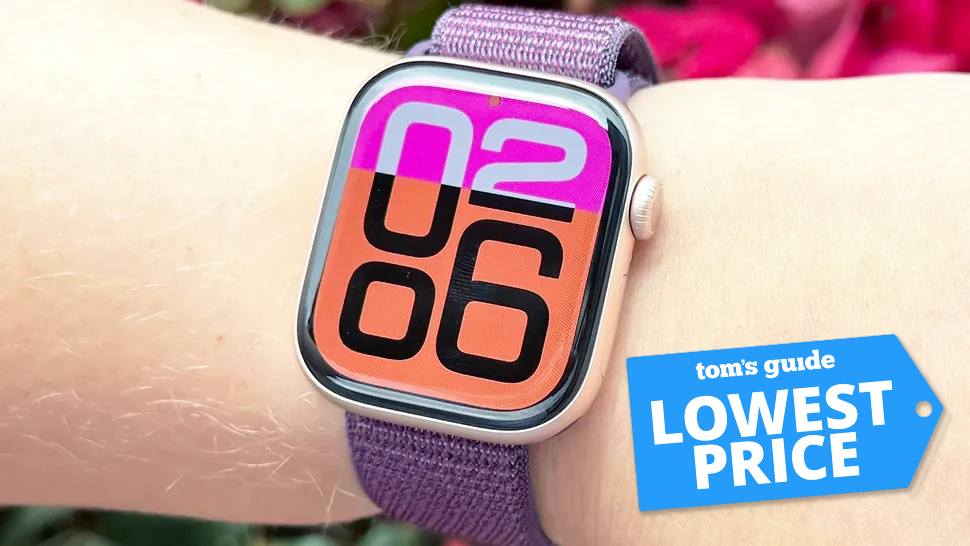Tom's Guide Verdict
The Bowers & Wilkins PI5 has the aesthetics, sound, and noise cancellation to draw you away from the AirPods Pro, but it isn’t perfect.
Pros
- +
Rich, spacious sound
- +
Premium craftsmanship
- +
Highly effective ANC
- +
Powerful mics and quick charging
- +
Adequate call quality
Cons
- -
Missing advanced specs and features found on the PI7
- -
Weak battery life and wireless range
- -
Iffy controls
Why you can trust Tom's Guide
Part of a dual announcement by the heritage audio brand, the Bowers & Wilkins PI5 joins the critically acclaimed PI7 as the company’s first-ever true wireless models to hit the market. It also serves as B&W’s entry-level offering, which at $249, seems a bit steep, but is still more affordable than the $399 PI7. Pricing aside, the PI5 is a solid competitor worthy of gracing any best noise-cancelling earbuds list.
Colors: Charcoal, White
Battery life (rated): 4.5 hours (ANC on), 24.5 hours (charging case)
Connectivity: Bluetooth 5.0
Processor: Qualcomm QCC5126
Size: 1 x 0.9 x 0.7 inches (per bud), 2.3 x 1.1 x 2.2 inches (charging case)
Weight: 0.2 ounces (per bud), 1.7 ounces (charging case)
Despite missing some of the PI7’s advanced specs, the PI5 has the sonic prowess to rival many of the category’s top performers. It also bears the same striking design, but in different colors. Furthermore, the buds come with longer battery life than the PI7, granted the playtimes, along with wireless range, fall short of industry standards. Proceed forward with our Bowers & Wilkins PI5 review to see how these new ANC earbuds stack up against the field.
- The best headphones overall
- Find a bargain with the best Apple AirPods alternatives
Bowers & Wilkins PI5 review: Price and availability
- $249 from various retailers
- Charcoal and White finishes available
The Bowers & Wilkins PI5 can be purchased directly from B&W or at major online retailers, including Amazon, B&H and Crutchfield. It is sold in two colors: Charcoal and White.
These buds share the same MSRP ($249) as their biggest competitor, the AirPods Pro, which isn’t cheap. At the same time, they are priced lower than other category powerhouses like the Bose QuietComfort Earbuds ($279) and Master & Dynamic MW08 ($299). If you’re seeking a less expensive ANC option, we recommend the surprisingly great Amazon Echo Buds 2 ($119) or Sony WF-1000XM3 ($178), a Tom’s Guide favorite that continues to see generous markdowns.
For all of the latest sales, feel free to bookmark our best headphones deals page.
Bowers & Wilkins PI5 review: Design and comfort
- Slick, water-resistant design
- Comfort OK at first, then wanes
Outside of the colorways, the PI7 and PI5 are no different in design. Build quality is superb, composed of matte plastic and sturdy aluminum with robust casing to sustain scratches and scuffs. These buds come IP54-certified as well to protect the gorgeous exterior from light splashing, sweat, and dirt; the added solid ingress protection makes this is a stronger rating than the AirPods Pro's IPX4.

Detailing is what gives the PI5 its swagger. For instance, the metal cylinder on the front that doubles as the touch panel looks cool. The company logo is discretely laser-etched underneath the cylinder, while shiny air vents rest at the top and bottom of the earbuds. Examine the silicone ear tips and you’ll notice a mesh barrier. B&W integrated this into the tips to prevent earwax build up for optimal acoustic performance. I’m fond of the black PI5’s boldly dark color scheme, but the PI7 is more alluring, thanks to its gold accents.
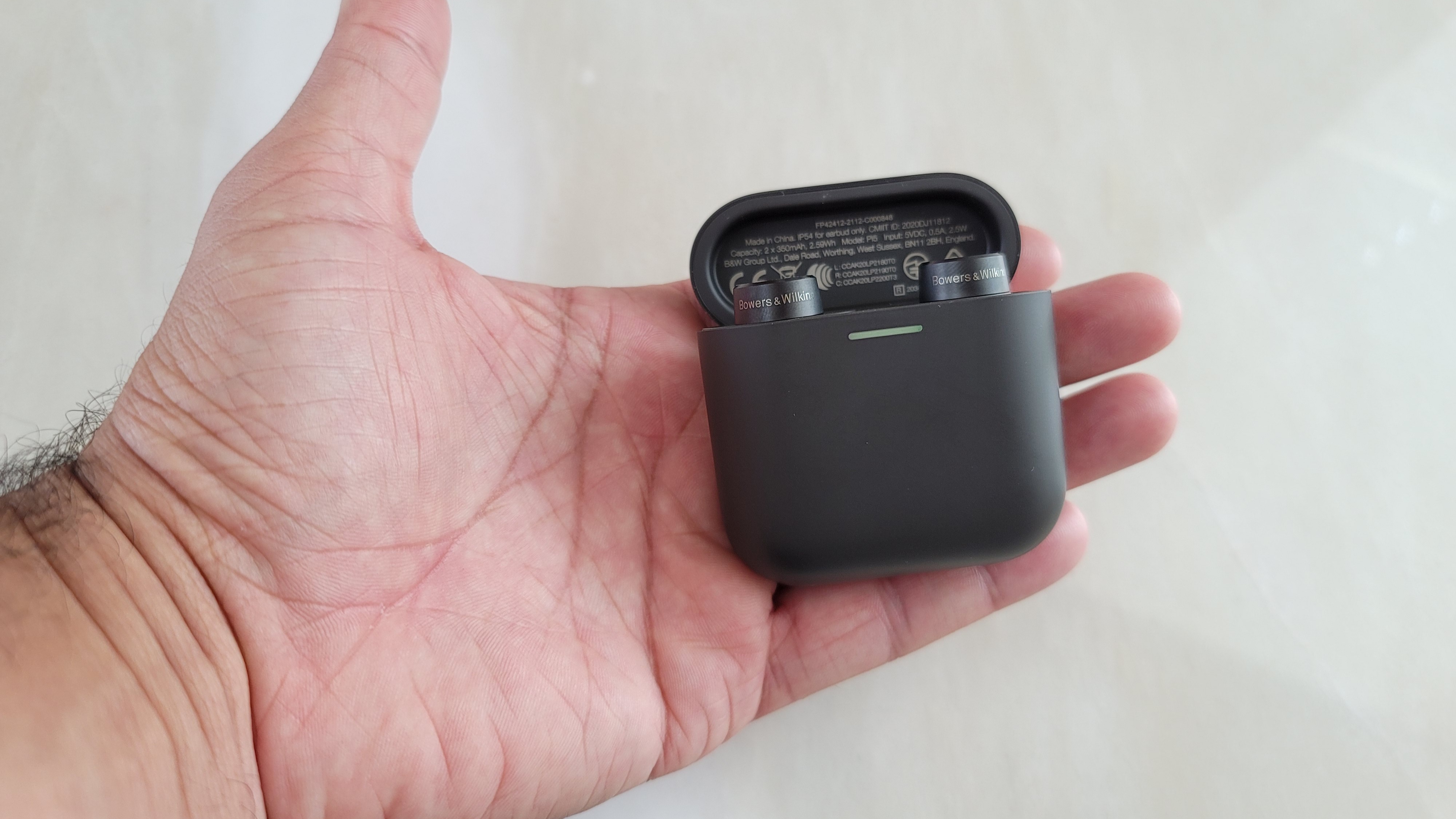
Onto the charging case, which embodies the sleekness of the buds, yet lacks their sturdiness. It does feel nice in hand and isn’t too big to make for an uncomfortable fit in your pockets. Unfortunately, it’s less durable than the AirPods Pro case, and that is saying a lot. The charging case also doesn’t have a front button like the PI7 case. It may not serve any purpose right now, but B&W claims it will take on a future function via firmware update. Sorry, PI5 owners.
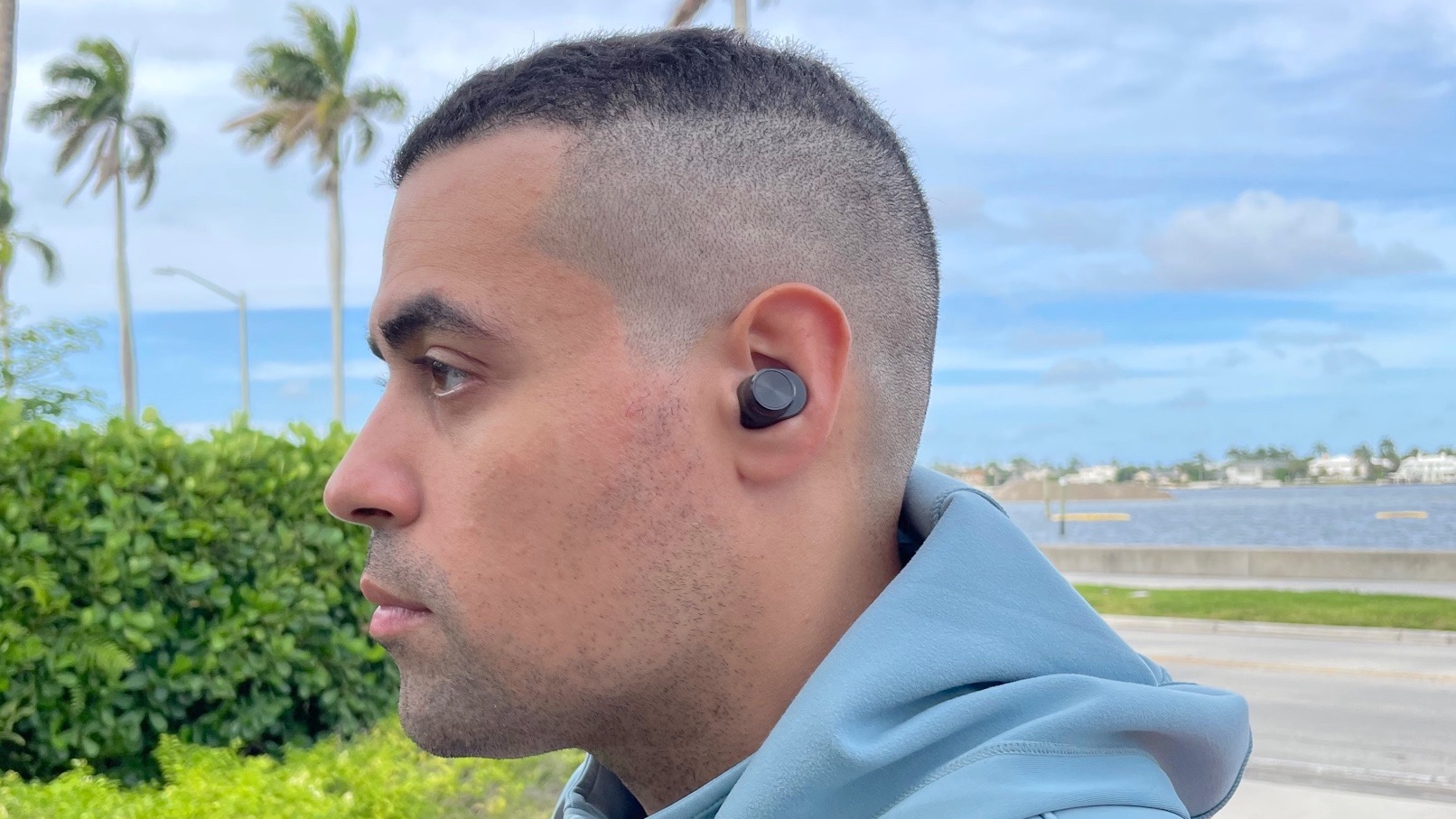
Comfort and fit are decent. The sound port easily nestles onto the inner part of your ear for proper stability and the tips create a tight seal around the canal to keep the buds in place. At the same time, the port applies pressure to the front of your ear and causes soreness after about an hour and a half of wear.
Bowers & Wilkins PI5 review: Touch controls and digital assistant
- Versatile touch sensors
- Smooth digital assistant integration
While you don’t get a full suite of media controls, the PI5 places plenty of functionality at the tip of your finger. The touch sensors support single (play/pause/answer call), double (skip track/end or reject call), and triple taps (previous track), along with a press-and-hold gesture to fire up voice assistance or ANC. On-ear detection is available as well to automatically pause music when removing the buds and resume playback when placed back on your ears.
The controls are highly responsive to touch, though the outcome varies whenever employing multi-tap gestures. The sensors often mistake double taps for single taps and triple taps for double taps. I wouldn’t put too much faith in automatic playback either, because there is noticeable latency whenever taking the buds off.
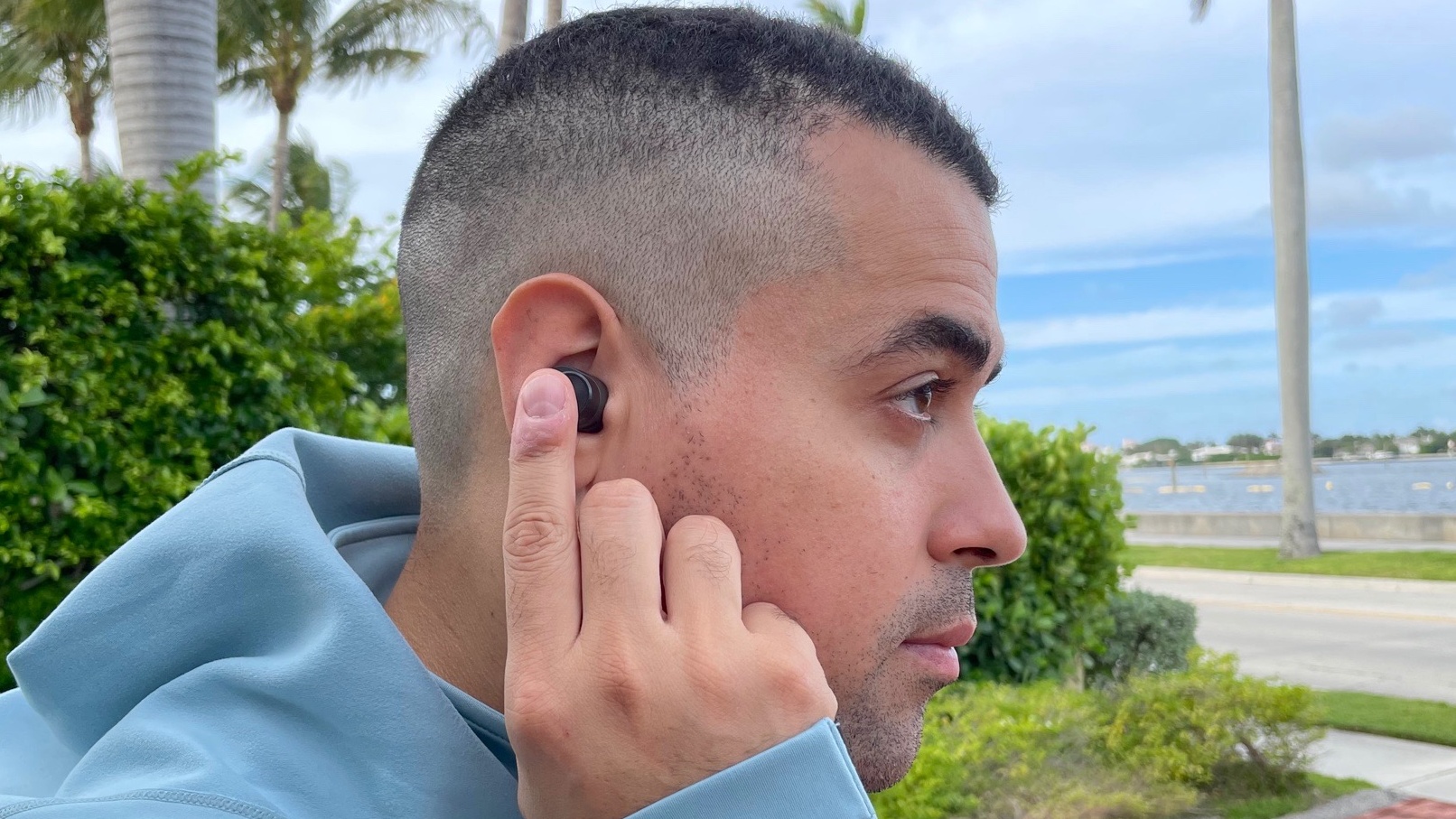
Even with a less powerful mic-array (the PI5 has four mics versus the PI7’s six mics), these buds delivered superb mic intelligibility when using Google Assistant and Siri. Firing up either AI bot was instant. Voice commands were registered accurately with every syllable accounted for, and results were produced quickly.
Bowers & Wilkins PI5 review: Active noise cancellation
- Highly effective ANC, indoors and out
- Doesn't have the PI7's Auto Mode
The PI7 may have more hardware to complement its stellar ANC performance, but the PI5 is no slouch. Would I put it up against the category’s best? Maybe the AirPods Pro, which should speak for how well noise neutralization works on these buds.
I was satisfied wearing the buds at home in a noisy environment that consisted of loud chatter and an even louder TV running the NBA playoffs in the background. It was great to watch the games in peace as I zoned out to Spotify playlists. Other sounds that went unnoticed were doorbells, iPhone timers, the washing machine, and my baby boy’s favorite rattle. I couldn’t say the same for his babbling and incessant crying in between naps, but at least the PI5 did a fantastic job of minimizing those distractions.
B&W’s noise-cancelling technology also performed well outside. Bicyclists had to ring their bike bells several times to garner my attention. What shocked me most was wind resistance, as I didn’t expect it to be as strong on the PI5 as the PI7; the whooshing effect produced in drafty conditions was subdued. Blaring sounds like ambulance sirens and tugboat horns would enter the soundscape. However, they sounded more like background effects on records I had playing.
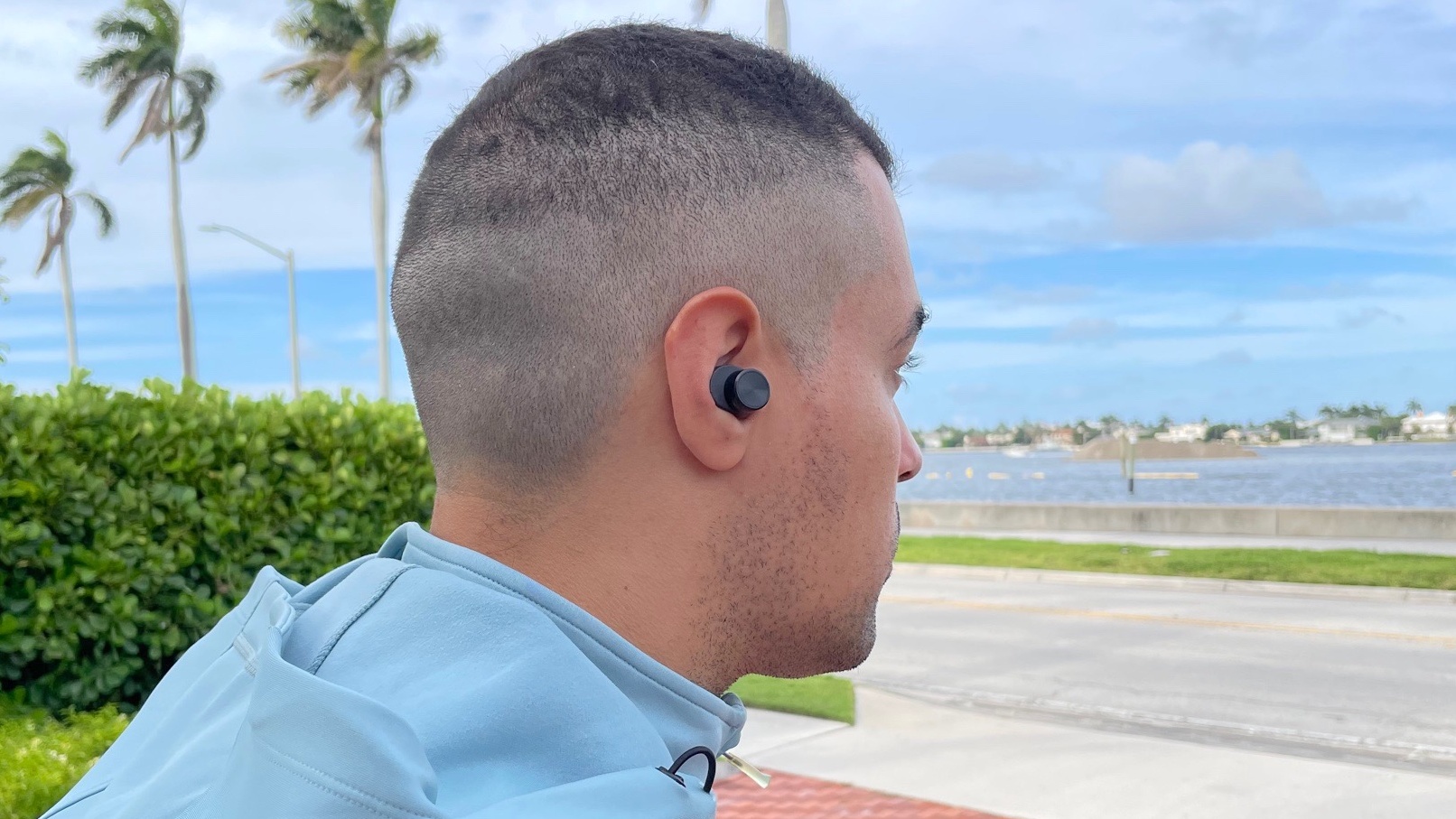
Auto Mode is a special setting designed for the PI7 that tweaks ANC by analyzing the noise around you. The PI5 doesn’t support it and that’s kind of a good thing, since it diminishes noise neutralization by making voices and high-frequency sounds more transparent. Still, it’s a feature with potential that you might want accessible if B&W can somehow bring it to the cheaper buds later.
Ambient Pass-Through also operates a little differently on the PI5. Instead of a slider to adjust the levels of transparency, you’re given two modes – Less and More – each is self-explanatory. Less is fine for eavesdropping on conversations that take place several feet away from you, while More lets in more noise to gain greater awareness of your surroundings.
I was also thrilled to see that B&W didn’t shortchange PI5 owners by excluding one of its unsung features. Like the PI7, the PI5 can blend ANC and Ambient Pass-Through, something I thought only the Bose QuietComfort Earbuds could do. Turning on both features simultaneously will make ambient noises sound more distinguishable and less harsh.
Bowers & Wilkins PI5 review: Audio quality
- Not as high-end as the PI7
- Still very good, and copes well with different genres
Underneath the hood of each bud is a 9.2mm Dynamic Drive Unit that pumps out wide sound and well-balanced range. My ears were fed a proper dose of lows, mids, and highs. This was exemplary on sonic gems like Hall & Oates “I Can’t Go for That (No Can Do),” where the layering of sounds at the beginning blended superbly, from the gentle bass line to the mechanical drum sample that had a nice knock to it.
I always turn to jazz when judging reproduction and the PI5 took on the challenge like a champ, handling complex arrangements better than most models in the category. The sudden bursts of ensemble play on Charles Mingus’ “Hobo Ho” can be overwhelming to take in, but the PI5 gave the orchestration proper representation. The densely stacked chords have distinction, letting you hear and almost feel every double bass strum and horn blow.
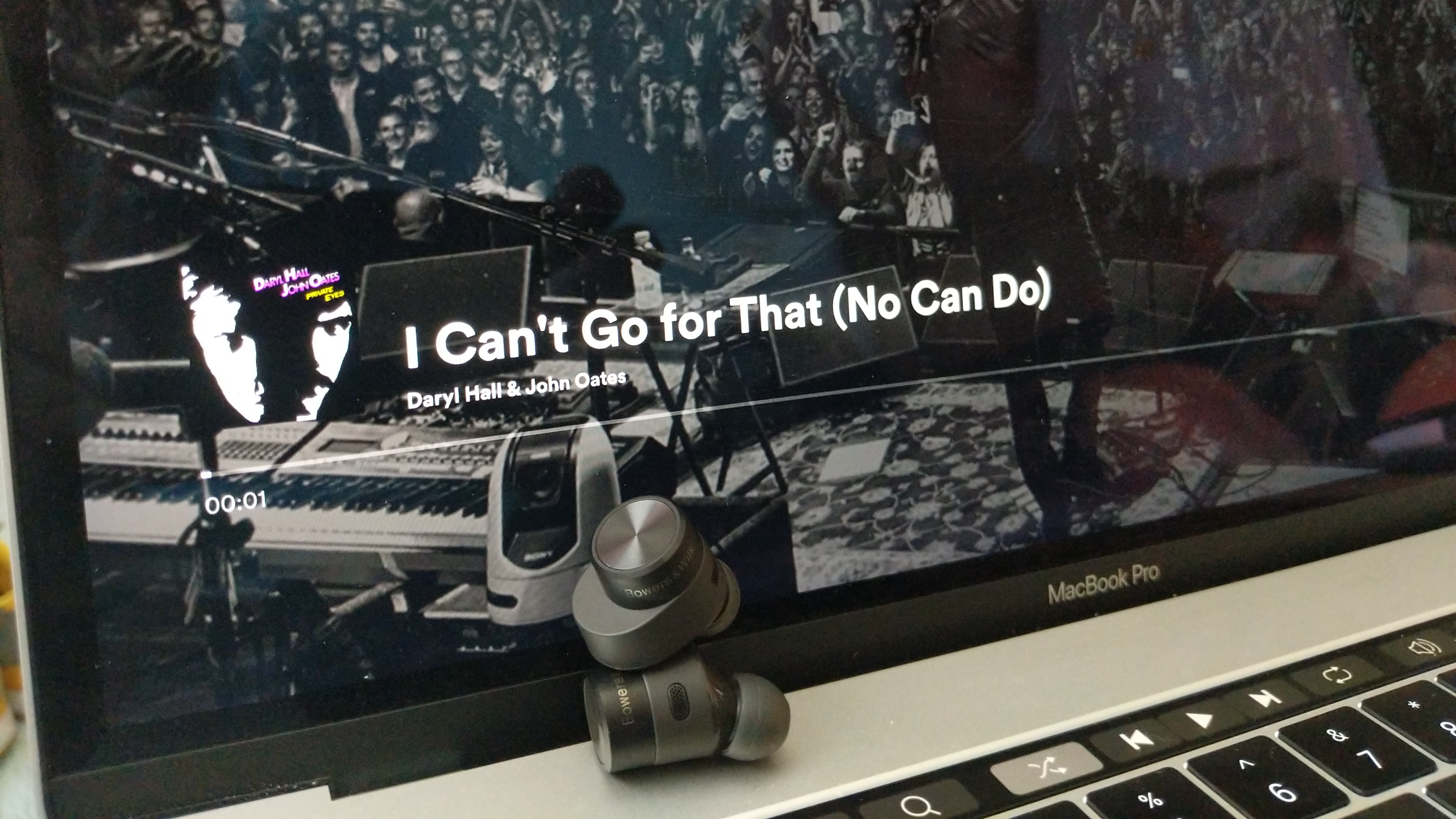
Ramping up the bass, I proceeded to blast Jay-Z’s “99 Problems” and was met with quaking 808 riffs that dominated the soundscape. It takes some fine engineering to get the rapper’s braggadocio rhymes sounding crisp over the monstrous production, which is what the PI5 achieves, though I felt the midrange and definition was better on the PI7.
The ability to stream music in aptX when connecting the charging case to any compatible analog audio output is a huge selling point for the PI7. Anyone can see why B&W kept the feature exclusive to its pricier offering, but, man, it stings to not have it on the PI5. Add 24-bit audio resolution, a dedicated external DSP, and full aptX codec support to the list of notable exclusions as well.
Bowers & Wilkins PI5 review: App and special features
- Richly-featured app
- Missing some of the PI7's extras
As far as the B&W app goes, the PI5 and PI7 share nearly the same features. You’ll see battery level indicators for each earbud at the top of the home screen. Toggle controls for both Noise Cancellation and Ambient Pass-Through are available, though, as previously mentioned, Auto Mode and the ambient-listening slider are MIA. There's also a toggle control for on-ear-detection and firmware support.
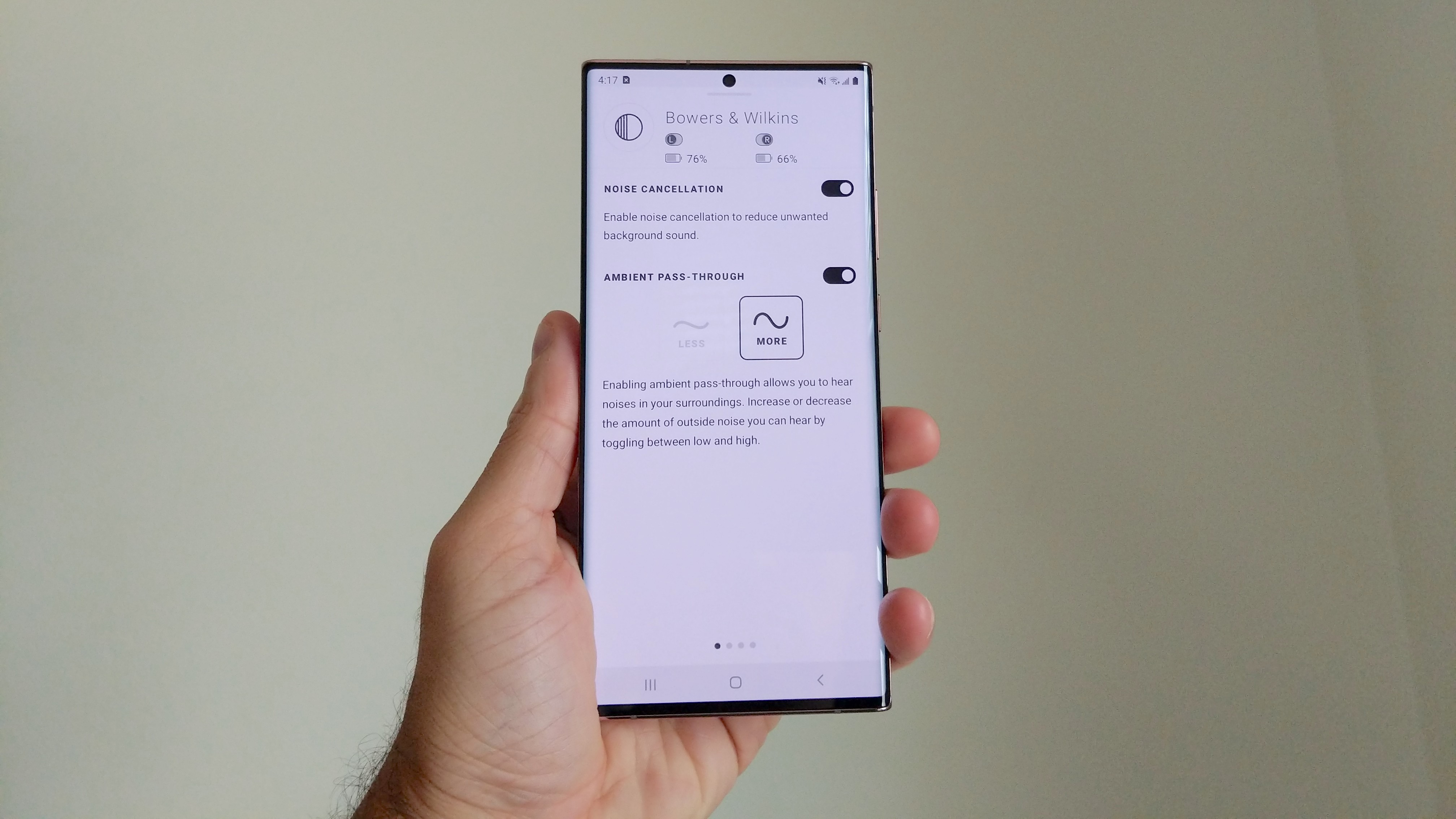
Soundscapes is the app’s signature feature and comes with six different profiles to mask the ambient noise around you with nature sounds. It’s a feature we’ve seen on a handful of other competitors and one that serves great purpose if you want to try something different than a meditation app for anxiety relief. Most importantly, every profile is engineered incredibly well and reproduces sounds true to their environment.
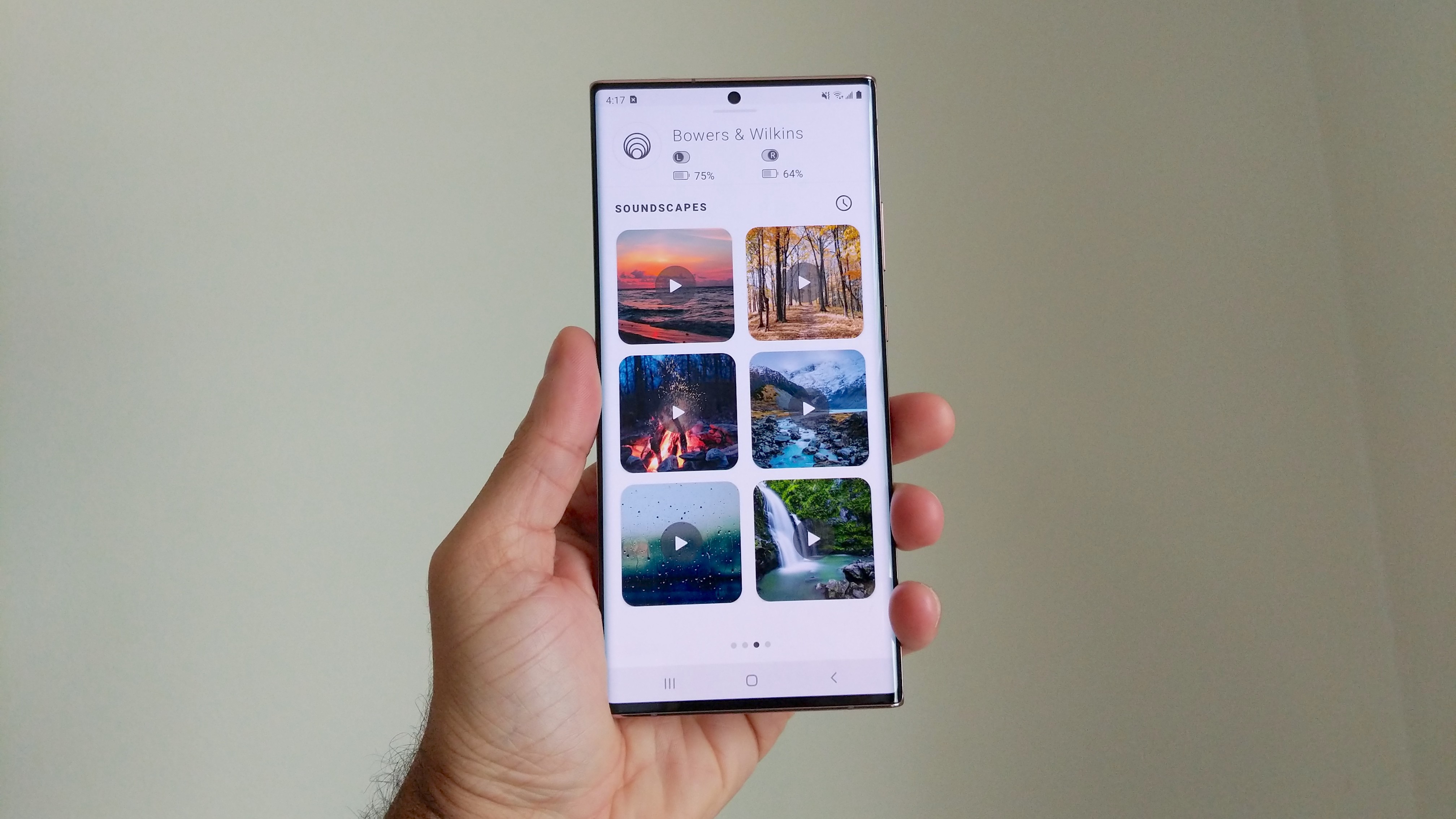
There are two other app features missing that seem to be reserved for the brand’s ANC headphones, the PX7. I’m referring to the voice prompt setting and Standby Timer that puts the buds asleep when inactive. Regarding what could have been added, I speak for everyone when saying a Find My Buds function and an EQ with presets would have been greatly appreciated.
Bowers & Wilkins PI5 review: Battery life and charging case
- 4.5 hours per charge, 24.5 hours from case
- Not terrible but disappointing, given price
Battery life on the PI5 (4.5 hours) is rated the same as the AirPods Pro (4.5 hours) and longer than the PI7 (4 hours). How sad is that? This is below the industry-average time set by the regular AirPods: 5 hours. And that isn’t factoring in volume, streaming, and ANC either, which bring playtime down by about 30 to 45 minutes. I guess this is OK for moderate listening (1.5 hours daily), though having to recharge the buds almost every other day is a tedious task.
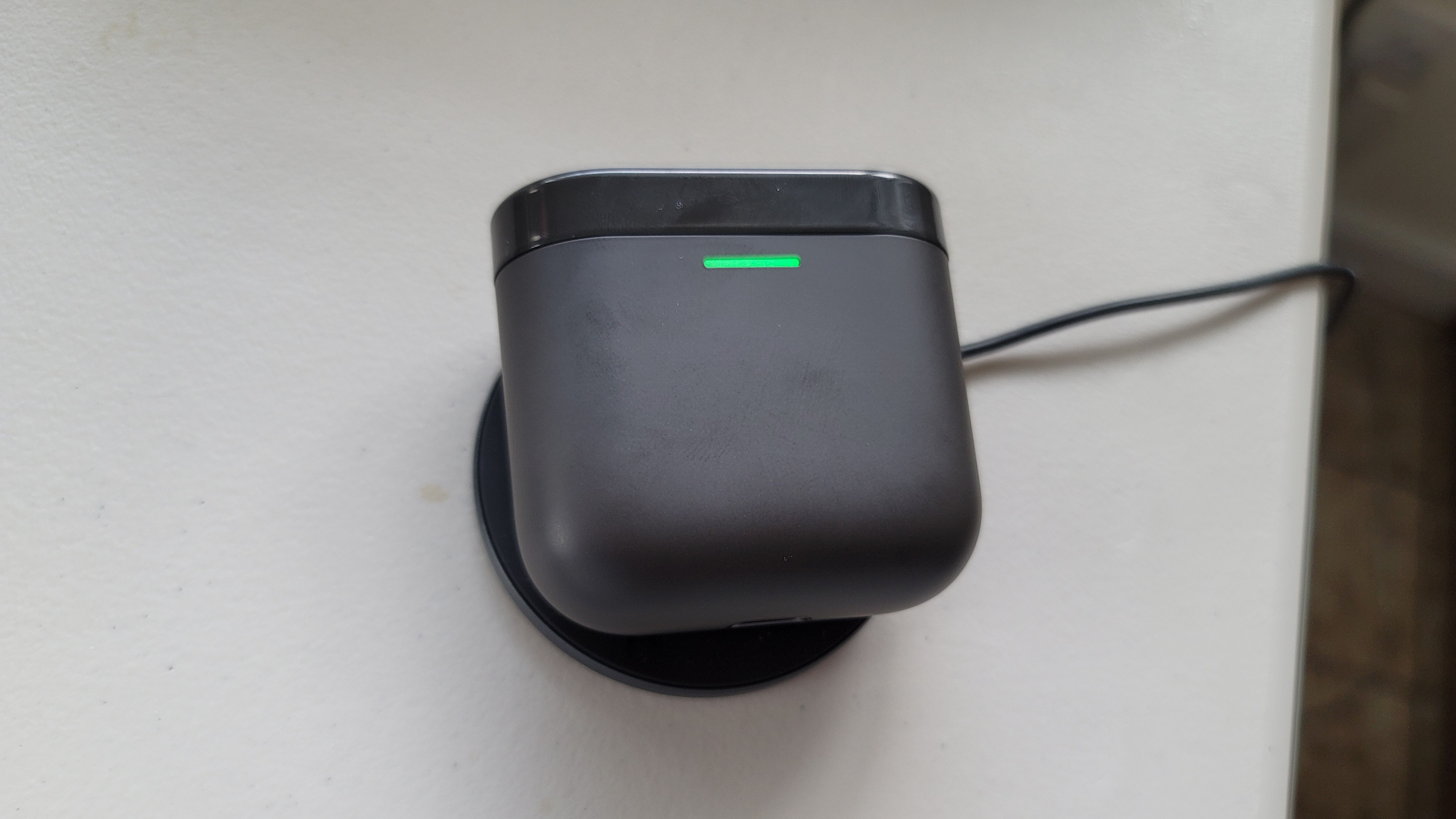
The charging case holds up to 24.5 hours, so at least you get 30 minutes more than the AirPods Pro’s charging case (24 hours). However, there are models that harness way more portable juice; the MW08 case generates 42 hours on a full charge. If there are two silver linings, it’s that the PI5’s case comes with wireless charging, as well as quick charging to net you 2 hours on a 15-minute charge.
Bowers & Wilkins PI5 review: Call quality and connectivity
- Very good voice call performance
- However, Bluetooth range is short
To my surprise, the PI5 was a better calling headset than the PI7. The mics pick up a lot of ambient sound, which you’ll hear people on the opposite end point out, but your voice will still sound fairly clear in most environments. Volume is given a slight boost, plus wind is minimized to reduce cutout and interference; the PI7 had an issue with crackling when speaking in drafty conditions. The missus could make out every word and sentence I spoke when taking the baby out on walks.

Nothing is different regarding connectivity, which means you can expect fast pairing and zero latency when streaming music. It also means dealing with poor wireless range. I don’t know what it is with both the PI5 and PI7, but neither product can seem to keep a stable connection past the 15-foot mark. Going past this distance causes audio to stutter terribly. For a newer release, I would have loved to see Google Fast Pair and multipoint technology included as well.
Bowers & Wilkins PI5 review: Verdict
The Bowers & Wilkins PI5 is basically a scaled down version of the PI7, but also a high-end performer that doesn’t compromise much on overall performance. You’re still getting one of the most attractive and well-built buds out there. Sound is clean and vibrant despite the smaller driver size, living up to the brand’s remarkable audio pedigree. ANC is also strong and can neutralize about the same level of ambient noise as the AirPods Pro, plus the two-level transparency mode is excellent for environment awareness.
The PI5 shares many of the same positives as the PI7. More negatives, too. Battery life is higher, but not by much, and remains some of the lowest in the category. I wish there were answers for the extremely limited wireless range. Some of the missing audio features may persuade audiophiles to splurge on the PI7 as well.
All in all, the PI5 fits right in with its luxury counterparts, hitting most marks and giving you top-notch craftsmanship at a more attainable price point.
A lifestyle journalist with an affinity for consumer products, Alex has over a decade of experience and has worked with popular publications such as Complex, Thrillist, Men’s Health, Gear Patrol, AskMen, and Hoop Magazine. He currently focuses on audio, reviewing the most coveted headphones in the market for both Tom’s Guide and Laptop Magazine.
